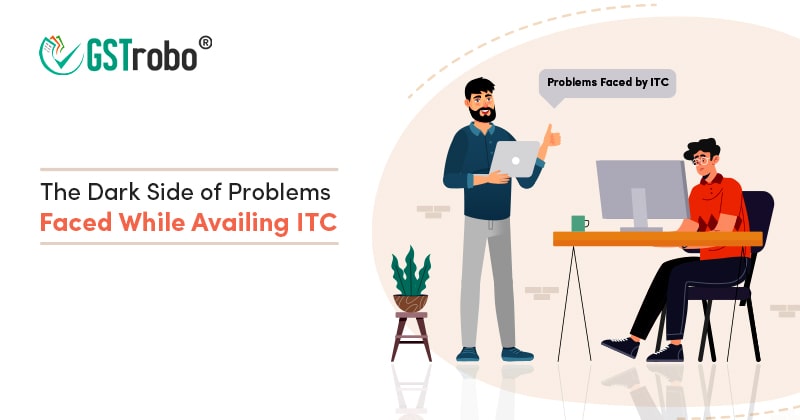The Dark Side of Problems Faced While Availing ITC
When the Goods and Services Tax (GST) was first introduced for indirect taxation, it was planned that it would bring about a tech-enabled compliance system where the supplier would file his details of every outward supply transaction, and those details would automatically populate and appear on the recipients’ GSTR 2A/GSTR 2B. After the acceptance of GSTR 2A/ GSTR 2B, GSTR 3 will automatically fill in the information from the inward and outbound supplies to calculate the total tax for the given period. It was not a smooth trip, either, and issues with obtaining ITC started to arise.

The Previous System for Availing ITC
The technologically advanced system fell short of expectations, forcing the government to postpone GSTR 2 indefinitely. There was no suitable method to verify vendor compliance with GSTR 2 because it was postponed indefinitely. A taxpayer can only receive the Input Tax Credit (ITC) after satisfying the two basic requirements listed below:
- Tax Invoice Receipt
- Receiving of goods or services
Problems Faced While Claiming ITC
A government can raise its tax revenue in one of two ways. One method is to raise the tax rate directly, and the other is to lower the amount of credit that may be claimed by taxpayers. To increase tax revenues flowing into the government, the government has opted for the latter alternative.
The government restricted the taxpayer from claiming the ITC by adding a new provision, 36(4), to the CGST Rules, 2017[1]. According to the rule, a taxpayer may only claim ITC for a maximum of 20% of the allowable credit if the supplier has not uploaded the invoices and debit notes. This 20 percent cap was decreased to 10 percent on January 1st, 2020, and again to 5 percent on January 1st, 2021.
It should be underlined that there was no legal justification for enacting this rule. The CGST Act does not contain any language allowing the government to impose limitations on the use of ITCs. A rule should always enhance the law, according to the general principle of law. However, as there is no law in this area, the government ought to have included a provision for one in the CGST Act.
Judiciary Rulings
On January 1, 2022, the rule 36(4) was amended formally to support the newly added section 16(2)(aa). According to the clause, a taxpayer can only claim ITC if the vendor who provided the goods or services disclosed the transaction in GSTR 1 and the details also appeared in the taxpayer’s GSTR 2B.
This has made things more difficult for the taxpayer because he will need to exercise caution each time he hires a vendor. After all, any non-compliance on the vendor’s behalf would result in increased charges for the taxpayer.
It appears that the government has transferred to the taxpayer the duty of monitoring and reminding the vendor to comply with the requirements, a duty that belonged to the government in the first place. This demonstrates that the taxpayer is now responsible for monitoring compliances, not the government.
The issue is whether the provision in question withstands judicial scrutiny? It appears that the provisions will fail to pass the court test since it places the burden of validation on the taxpayer, which should ideally be done by the government, and it also makes it impossible to constantly monitor the seller to see if he has completed the process of filing tax returns. Furthermore, these regulations are causing difficulties in obtaining ITC, which cannot be accepted because the government cannot make a provision that prevents a taxpayer from receiving his or her due Input Tax Credit.
Problems with obtaining ITC
There is still some uncertainty on how section 16(2)(aa) should be applied to invoices received before January 1, 2022, and how much credit should be applied to them, as well as quarterly return filers.
Conclusion
Taxpayers must exercise caution since they may be held liable not only for their errors but also for those of their vendors. Only the courts can assist taxpayers in obtaining ITC under the GST system.
